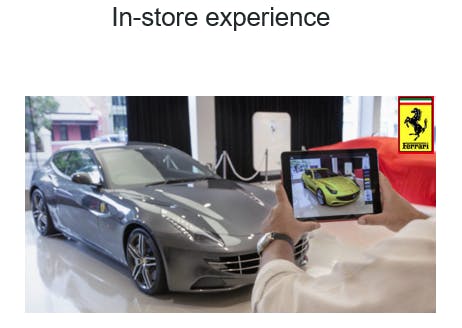Funds in Focus

Keeping up with the new consumer
- Published
-
Length
3 minute(s) read
Digitisation: temporary or permanent?
We all know that the way we consume has changed dramatically in recent years. There’s now an app for almost everything. We use our phones to read the news, order food, monitor our sleep, and even invest!
Well-known names, such as Amazon or Uber, or their emerging counterpart, JD.com, Sea Limited, and MercadoLibre have skyrocketed in 2020 as stay-at-home dynamics have forced people to consume differently. The key question now for these companies is whether the adoption rate was only lockdown-driven, leading user engagement to drop as economies reopen. Have we reached the full potential of these Covid names?

The trademarks and logos do not imply any affiliation with or endorsement by them.
At Carmignac, we are convinced that the overall digitisation thematic hasn’t quite played out yet, for several reasons:
The importance of habits. We can already see in some countries that have reopened that consumers keep ordering food delivery, shopping online, etc.
Penetration is still low. Especially in some areas such as grocery and in some regions such as Europe and emerging markets
Margin expansion. After years of strong growth, these platforms should see their profit margin improve as they increase the monetization of their ecosystems.
Beyond ecommerce, digitisation should continue to extend to other parts of our daily life. For example, one area where digitisation is accelerating is education, but it is at the early stages of adoption despite growing very fast since the outbreak of the virus.
The need for a change
Interestingly, if digitisation has revolutionized the way we consume, it has also strengthened our need for authenticity and experience.
We are increasing our focus on those companies that go the extra mile in humanising transactions or reinventing the way we shop. For example, some platforms offer a strong differentiation vs. other marketplaces, as it makes people feel that there’s a person behind every item. One example is Etsy, an ecommerce platform with a “community of sellers” that are creative entrepreneurs/artists enabling Etsy to have a collection of unique products.
In terms of experience, we are looking at companies able to offer a unique in-store consumer experience such as Ferrari, or Lululemon in athletic apparel, that are using augmented reality to enable customers to try their products.

Another interesting change that we are witnessing is a preference for more sustainable consumption. We have seen a clear uptrend in the production and sale of electric vehicles and, while this is underpinned by government subsidies and adapting infrastructures, it also denotes a shift in consumer preferences which we have been trying to benefit from in our portfolio.
The need for uniqueness
Finally, this new consumer is still looking for uniqueness, which luxury companies clearly aim to offer. People still desire those things that not a lot of people can get. A company like Hermès deliberately makes it hard for consumers to access some of its most coveted bags, such as the Birkin and the Kelly. You can’t buy these items online, and since the brand no longer offers waiting lists through its stores, you need to have an existing relationship with Hermès to buy one. Moreover, scarcity also means these bags retain their value on second-hand markets. Hermès bags fetch 80% of their retail price when resold, while Chanel and Louis Vuitton only fetch 63%.
Carmignac Investissement
![[Background image] [CI] Blue sky and buildings [Background image] [CI] Blue sky and buildings](https://carmignac.imgix.net/uploads/article/0001/05/CI_WEB.jpg?auto=format%2Ccompress)
Looking for winners of today and tomorrow
International equity fund with no restrictions in terms of region, sector or market capitalisation.
Performance drivers combining long-term trends and tactical opportunities.
A disciplined investment process based on fundamental bottom-up analysis to maximize alpha generation.
Carmignac Investissement A EUR Acc
Recommended minimum investment horizon
Lower risk Higher risk
Potentially lower return Potentially higher return
EQUITY: The Fund may be affected by stock price variations, the scale of which is dependent on external factors, stock trading volumes or market capitalization.
CURRENCY: Currency risk is linked to exposure to a currency other than the Fund’s valuation currency, either through direct investment or the use of forward financial instruments.
DISCRETIONARY MANAGEMENT: Anticipations of financial market changes made by the Management Company have a direct effect on the Fund's performance, which depends on the stocks selected.
The Fund presents a risk of loss of capital.
Source: Carmignac, 30/04/2021

